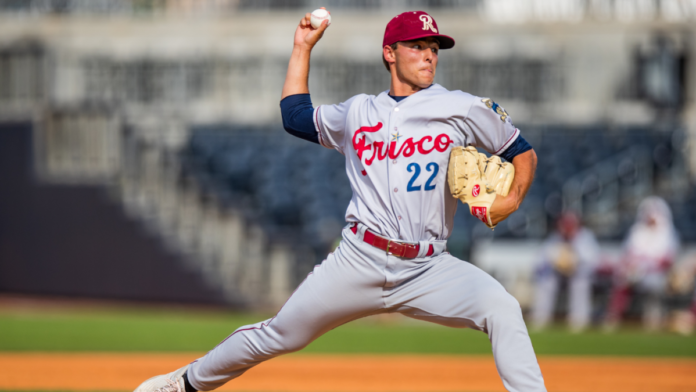We here at CBS Sports launched our annual ranking of the top 50 prospects in Major League Baseball this week. While our list was compiled after myriad conversations with industry experts (scouts, analysts, and player development types included), we’ve come to accept that disagreement is a fundamental part of player evaluation. Different people have different biases and predilections, and that’s fine; it’s healthy, even — not in an “embrace debate” marketing stunt, but in a “this is how the industry works” way.
Still, we wanted to take some time to explain why we excluded three well-known prospects from the top 50. Before we get to the meat and potatoes, let us note that there are more than 50 future big-league players in the minors. Moreover, our evaluations should be treated like snapshots in time. Some players become better than expected; some become worse. We’re not psychic. We’re merely doing the best we can with the information we have at the time.
With that out of the way, let’s go ahead and get to the reason you clicked.
Why you might have expected him to make the top 50: Leiter was the No. 2 pick in the 2021 MLB Draft. He was highly regarded for a number of legit reasons, including his electric fastball; his success against SEC-caliber competition; and his makeup and bloodlines (you can call his dad Al). The Rangers believed in him enough to fork over the highest signing bonus in the draft (nearly $8 million), and to then begin his professional career with an aggressive assignment to Double-A Frisco.
Why he didn’t: That assignment proved to be too much for him, as he battled his command and pitch quality throughout the year. Leiter appeared in 23 contests, amassing a 5.54 ERA and a 1.95 strikeout-to-walk ratio in 92 2/3 innings pitched. He was also shut down for a few weeks because of arm fatigue. There’s no sense giving up on Leiter already, but it’s fair to write that he didn’t look the part of a nearly finished product. We’ll see what year two brings.
2. Kumar Rocker, RHP, Texas Rangers
Why you might have expected him to make the top 50: Rocker was the No. 3 pick in the 2022 draft. He was highly regarded for a number of legit reasons, including — OK, we’ll cut it out. Put simply, Rocker authored one of the most illustrious collegiate careers in recent memory. Teams liked him and his lethal slider enough to draft him in the top 10 in consecutive summers, which is no small feat considering he barely pitched last year. (The Mets passed on signing him in 2021 because of issues they had with his physical.) Rocker demonstrated his present health leading up to the draft by making five starts in the Frontier League, an independent professional league, where he overpowered so-so competition to the tune of a 1.35 ERA and 32 strikeouts in 20 innings.
Why he didn’t: We’ve noted before that some evaluators have been lower on Rocker than you’d expect given, well, all of the above. The reasons for that hinge on his limited arsenal (his changeup lags behind his fastball and slider), and the potential command and durability issues that may arise from his delivery. It’s notable that Rocker showed off new mechanics during his six appearances in the Arizona Fall League. Alas, the results weren’t great, as he issued 12 walks in 14 innings. Maybe Rocker will fare better after a winter of repetition. For the time being, we couldn’t justify placing him in the top 50.
3. Robert Hassell, OF, Washington Nationals
Why you might have expected him to make the top 50: Hassell’s offensive potential so enamored the Padres that they picked him eighth in the 2020 draft. Even then, the belief was that he had a good feel for contact, but that his upside would be dictated by how much power he was able to tap into. Depending on your perspective, Hassell’s inclusion in last summer’s Juan Soto trade meant either the Padres lost hope or the Nationals maintained it.
Why he didn’t: The evaluators we spoke to leaned the former way. After all, Hassell has a career ISO of .150 through his first 222 professional games. It didn’t help his case that his performance flatlined in 27 Double-A games following a late-season promotion: he hit .222/.312/.296 with nearly three times as many strikeouts (35) as walks (13). That’s a small sample size, plus Hassell celebrated his 21st birthday only in August, making him several years younger than his average opponent. Perhaps a full season in the Nationals system will help bring out the best in him. We’re willing to wait and see.


